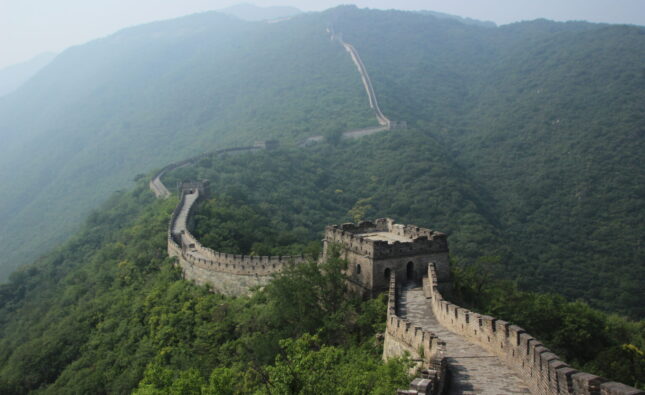
In today’s digital age, where technology permeates almost every aspect of our lives, it’s time to reconsider how we approach water governance. The concept of liquid democracy offers a fresh perspective, empowering individuals and communities to actively participate in decision-making processes. This article delves into the problems related to water scarcity in both developed and underdeveloped nations, shedding light on the urgent need for rethinking water governance. Let’s explore the challenges, examples, and potential solutions in this critical domain.
The Role of Liquid Democracy in Water Governance
Liquid democracy, a participatory decision-making model, has the potential to revolutionize water governance in the digital age. By utilizing digital platforms and technology, liquid democracy enables individuals to have a direct say in water-related decisions. It facilitates the exchange of ideas, promotes transparency, and ensures wider participation, leading to more inclusive and effective water governance.

Through liquid democracy, citizens can actively contribute to decision-making processes, voice their concerns, and collaborate with experts, policymakers, and local authorities. The use of digital platforms and online voting systems enables real-time communication, data sharing, and informed decision-making. This decentralized approach empowers communities to address water scarcity issues with agility and adaptability.
FACTS
Water scarcity is a pressing issue that affects numerous regions around the world. Here are some real facts about water governance:
- Global Water Crisis: According to the World Health Organization (WHO), around 2.2 billion people worldwide lack access to safe drinking water, and about 4.2 billion people lack access to safely managed sanitation services.
- Unequal Water Distribution: Water scarcity is not solely limited to arid regions. Even countries with significant water resources face challenges due to uneven distribution. For example, Canada, known for its abundant freshwater resources, still has communities facing water shortages and advisories.
- Increasing Water Demand: Growing population, industrialization, and agricultural needs have led to a significant increase in water demand. The United Nations estimates that global water demand will exceed supply by 40% by 2030 if current trends continue.
- Impact on Agriculture: Agriculture accounts for approximately 70% of global freshwater withdrawals. Water scarcity affects agricultural productivity, leading to reduced crop yields, food insecurity, and economic challenges for farmers.
- Economic Consequences: Water scarcity has profound economic implications. The World Bank estimates that water-related challenges could cost the global economy $500 billion per year by 2030. These costs include increased healthcare expenses, reduced agricultural productivity, and infrastructure damage.
- Environmental Impact: Water scarcity affects ecosystems and biodiversity. Reduced water availability leads to habitat degradation, loss of wetlands, and the decline of aquatic species, impacting the overall ecological balance.
- Health Risks: Inadequate access to clean water and sanitation services contributes to the spread of waterborne diseases, causing significant health risks. According to UNICEF, around 297,000 children under the age of five die each year due to diarrheal diseases caused by unsafe water and poor sanitation.
- Climate Change Influence: Climate change exacerbates water scarcity challenges. Changing rainfall patterns, rising temperatures, and increased frequency of droughts and floods have a significant impact on water availability and quality.
- Conflict Over Water: Water scarcity has been linked to conflicts and tensions between communities and even nations. Competing water demands can lead to disputes over shared water resources, further exacerbating social and political challenges.
- Solutions and Sustainable Practices: Addressing water scarcity requires a multifaceted approach. Promoting water conservation, implementing efficient irrigation techniques, investing in water infrastructure, and adopting sustainable water management practices are crucial steps toward mitigating water scarcity and ensuring access to safe water for all.
These facts highlight the severity of the water scarcity issue, emphasizing the need for collective action and sustainable solutions to ensure water security and preserve this vital resource for future generations.

I. The Global Water Crisis
Water scarcity has become a pressing issue, affecting millions of people worldwide. Developed and underdeveloped nations alike grapple with the consequences of inadequate access to clean water. The severity of this crisis cannot be overstated, as it impacts various aspects of society, including health, agriculture, and economy.
II. Water Governance in Developed Nations
Contrary to popular belief, water scarcity is not limited to underdeveloped regions. Developed nations face their own set of challenges in managing water resources effectively. Factors such as population growth, unsustainable water management practices, and the adverse effects of climate change contribute to water scarcity in these nations.
For instance, in California, the United States, recurring droughts have led to water shortages, putting immense strain on agricultural activities and triggering conflicts over water allocation. Australia, another developed nation, has experienced severe water scarcity due to prolonged droughts, affecting both urban and rural communities.
III. Water Governance in Underdeveloped Nations
While water scarcity is a global problem, underdeveloped nations often bear the brunt of its consequences. Limited infrastructure, lack of access to clean water, and inadequate resources for water management exacerbate the challenges faced by these nations.
In Sub-Saharan Africa, for example, a large portion of the population lacks access to safe drinking water. The absence of reliable water sources and poor sanitation contribute to the spread of waterborne diseases, further deepening the crisis. Similarly, regions in South Asia, such as parts of India and Pakistan, struggle with water scarcity due to overexploitation of groundwater resources and inadequate infrastructure.
IV. The Role of Technology in Water Governance
Harnessing the power of technology can revolutionize water governance and mitigate the challenges posed by water scarcity. The digital age provides an opportunity to leverage innovative solutions and promote sustainable practices.
One notable example is the use of Internet of Things (IoT) devices to monitor water consumption and detect leaks in urban areas. Advanced data analytics can aid in identifying patterns and optimizing water usage. Additionally, mobile applications can facilitate citizen engagement, allowing individuals to report water-related issues and contribute to community-driven solutions.
V. Promoting Water Conservation and Sustainability
Addressing water scarcity requires a collective effort involving individuals, communities, and governments. Promoting water conservation and sustainability is crucial for long-term solutions.
Education and awareness campaigns play a vital role in fostering behavioral change. By educating the public about water conservation techniques, efficient irrigation practices, and the importance of water reuse, we can make significant progress in mitigating water scarcity.
Furthermore, sustainable water management practices, such as rainwater harvesting, graywater recycling, and the implementation of water-efficient technologies, can significantly reduce water consumption and promote a more resilient water future.
Conclusion
The water governance demands immediate action and a fresh approach to governance. Liquid democracy offers an inclusive framework for engaging individuals and communities in decision-making processes. By rethinking water governance and leveraging the potential of technology, we can overcome the challenges posed by water scarcity. Together, we can ensure a sustainable and water-secure future for all.












